If pipistrelles are the fast and familiar garden bats of Jersey, the long-eareds are their quieter, more secretive cousins. With ears nearly as long as their bodies and a slow, moth-like flight, these bats are masters of stealth. Instead of chasing insects on the wing, they glean prey directly from leaves, branches, and even the ground, listening intently for the faint rustle of a moth’s wings. Their echolocation is so soft it often goes undetected by bat detectors — earning them the nickname “whispering bats.”
Jersey is home to two long-eared species: the widespread brown long-eared bat (Plecotus auritus) and the much rarer grey long-eared bat (Plecotus austriacus). Both share the same distinctive look, but their conservation stories are very different.
BROWN LONG-EARED BAT (Plecotus auritus)
The brown long-eared bat is one of the most distinctive species in Europe, easily recognised by its enormous ears — almost as long as its body — and its slow, fluttery flight. In Jersey, it is a familiar woodland resident and has been recorded breeding in bat boxes, making it an important focus of local conservation projects.
Taxonomy & History
The species was first described by Carl Linnaeus in 1758. For a long time, it was thought to be part of a single group with other long-eared bats, until advances in genetics and morphology confirmed it as a distinct species. Its range is the broadest of the long-eared group, extending across Europe and into western Asia.
Ecology & Behaviour
Brown long-eared bats specialise in “gleaning” — plucking insects directly off leaves, branches, and even the ground. They feed on moths, beetles, and spiders, often switching to passive listening rather than echolocation to detect prey. Their roosts include tree cavities, attics, barns, and bat boxes, and in Jersey they are strongly linked to regenerating woodland and orchards. Colonies are usually small, with fewer than 50 individuals.
Conservation
Globally listed as Least Concern (IUCN) and considered “common” in France, the brown long-eared bat is still vulnerable to the loss of traditional roosts and the decline of insect-rich foraging habitats. In Jersey, woodland regeneration and artificial roost provision have supported stable local populations, though their whisper-quiet calls make them harder to monitor than other bats.
Research Notes
Studies across Europe, including work by Paul Racey, Abigail Entwistle, and John Speakman, have revealed the species’ unusual social structure. Colonies often contain both sexes, but mating typically takes place at autumn swarming sites where bats gather in caves and ruins. Locally, the Woodland Bat Project has confirmed breeding evidence for this species in artificial roosts.
Fun Fact
Brown long-eared bats can sometimes capture moths by hovering and snatching them from spider webs — one of the few bats known to do so.
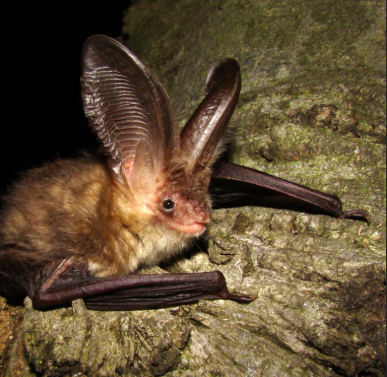
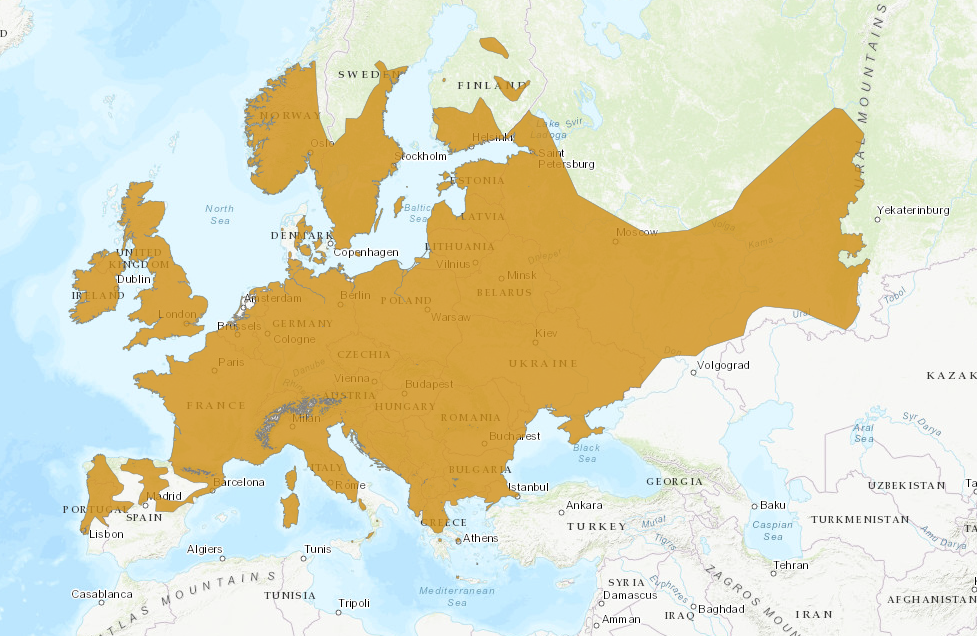
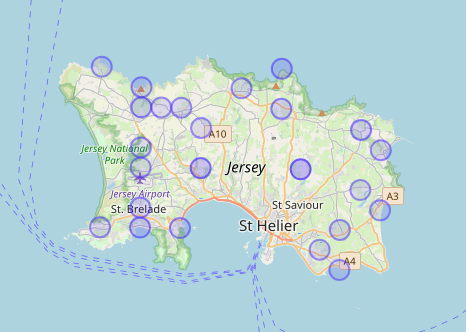
GREY LONG-EARED BAT (Plecotus austriacus)
The grey long-eared bat is one of Europe’s rarest mammals, with Jersey hosting one of the most significant populations in the Channel Islands. Slightly larger and greyer than its brown cousin, it is a species of high conservation concern and an important focus of local research.
Taxonomy & History
The species was first described in 1829 by Johann Christian Daniel von Schreber. For centuries, it was confused with the brown long-eared bat until careful study of morphology, ecology, and genetics confirmed it as distinct. Its distribution is more southerly, stretching across western and southern Europe, but in the British Isles it survives only in the south of England and the Channel Islands.
Ecology & Behaviour
Grey long-eared bats roost in barns, attics, and stone buildings, often in farmland and coastal landscapes. They hunt moths, beetles, and bush crickets in meadows, hedgerows, and open fields, relying on their large ears to detect prey rustling in vegetation. In Jersey, maternity roosts have been documented, showing that the island supports breeding populations.
Conservation
Listed globally as Near Threatened (IUCN) and Vulnerable in France, the grey long-eared bat is declining across much of its range due to agricultural intensification, roost disturbance, and climate change. In 2022, Jersey witnessed a major mortality event during a heatwave, when over 60 individuals — most of them juveniles — died at a single maternity roost. This highlighted the vulnerability of small island populations to climate extremes.
Research Notes
Locally, the Grey Long-eared Bat Project led by Sangan Island Conservation has monitored maternity colonies and habitat use. The remains from the 2022 mortality event are now held at the National Museum of Scotland, where they are contributing to genetic and ecological studies. Internationally, the species has been a focus of conservation research in the UK and across southern Europe, where it is considered a priority species.
Fun Fact
Grey long-eared bats can switch off echolocation completely, hunting in total silence by using only their hearing to detect the faint rustle of insects in grass.
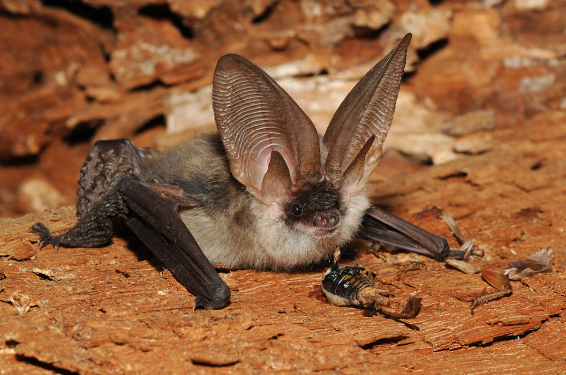
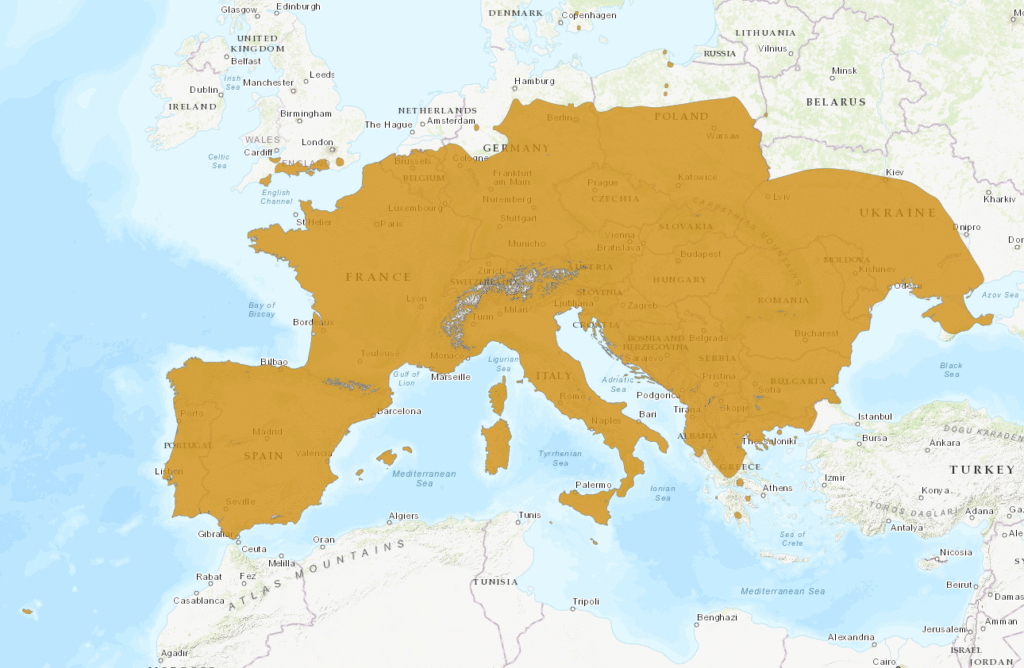

Further reading
Entwistle, A., Racey, P.A., Speakman, J. 1996. Habitat exploitation by a gleaning bat, Plecotus auritus. Philosophical Transactions B, 351, pp. 921 – 931.
Entwistle, A., Racey, P.A., Speakman, J. 1997. Roost selection by the Brown Long-Eared bat Plecotus auritus. Journal of Applied Ecology, 34(2), p. 399.
Entwistle, A., Racey, P.A., Speakman, J. 2000. Social and population structure of a gleaning bat, Plecotus auritus. Journal of Zoology, 252, pp. 11-17.
Bosso, L., Fichero, G., Mucedda, M., Pidinchedda, E., Veith, M., Smeraldo, S., De Pasquale, P.P., Mori, E., Ancillotto, L. 2025. Island life and interspecific dynamics influence body size, distribution and ecological niche of long-eared bats. Journal of Biogeography, e70071, p.15.
Juste J, Ibáñez C, Muñoz J, Trujillo D, Benda P, Karataş A, Ruedi M. 2004. Mitochondrial phylogeography of the long-eared bats (Plecotus) in the Mediterranean Palaearctic and Atlantic Islands. Mol Phylogenet Evol. 31(3), pp. 1114-26.
Kiefer A, Mayer F, Kosuch J, von Helversen O, Veith M. 2005. Conflicting molecular phylogenies of European long-eared bats (Plecotus) can be explained by cryptic diversity. Mol Phylogenet Evol.,25(3), pp. 557-66.
Mayer, F. & van Helversen, O. 2008. Sympatric distribution of two cryptic bat species across Europe. Biological Journal of the Linnean Society, 74(3), pp. 365-374.

Working to protect and conserve Jersey’s native bat species through research, education, and community involvement.
Join our mailing list to receive updates about bat walks, training, and events.
2025 Jersey Bat Group. All rights reserved.